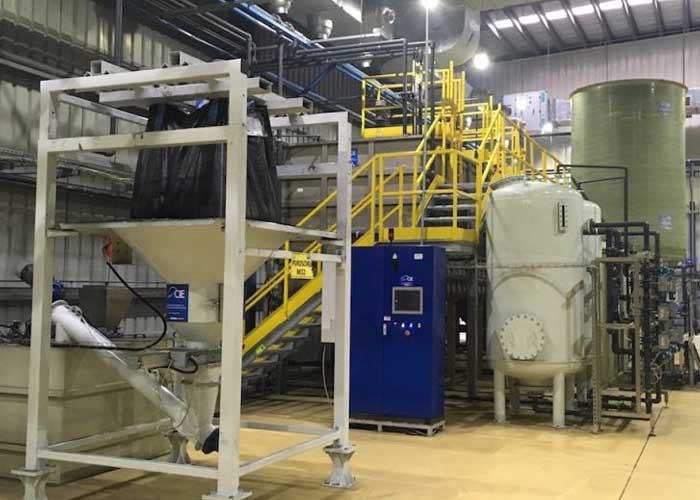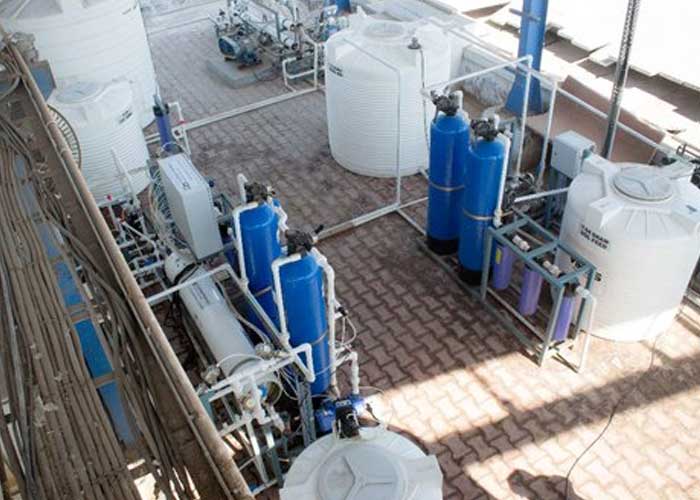If you have ever wondered about the process of reverse osmosis, you'll be glad to know that it can be used to clean water. The basic function of reverse osmosis uses a membrane to remove dissolved and suspended particles. The industrial RO plant typically runs a 50 to 85% recovery rate, and the purified water passes through the membrane and is ready for use.
A synthetic semipermeable membrane material is packaged in a suitable element when using the reverse osmosis process. The membrane elements are typically made of cellulose acetate, triacetate, or a plastic-based material. They can be mounted in a single housing, containing up to six in series. The element configuration will depend on the water chemistry and the desired product water quality.
The Reverse Osmosis Plants Process is a water treatment process in which a membrane removes impurities by forcing purified water into the dilute side. The reject water is then washed away. A reverse osmosis plant can act as an ultra-filter, removing a wide range of contaminants. Common membrane materials include polyamide thin-film composites, cellulose acetate, and cellulose triacetate. The membrane material is either wound around a tube or consists of hollow fibers bundled together.
Once the water is purified, it goes through a pre-filtering phase to reduce suspended matter and chloride. Chlorine, which can damage thin-film material membranes, is removed from the water by this stage. After the pre-filtering phase, the water passes through the semipermeable membrane, which removes various contaminants. Once the water passes through the semi-permeative membrane, it enters a pressurized storage tank for storage. After this step, the water goes through a carbon post-filtering phase to remove any aesthetic taste or odors.

The reverse osmosis process is a very complex procedure. The water that passes through the membrane will be free of organic substances, and most organic substances have molecular weights over 100. A salt ion rejection mechanism based on valence will reject the water more effectively. Monovalent ions are less effective in removing water as they do not interact with the membrane.

The process of reverse osmosis requires a high level of concentration. As a result, the RO process can remove more dissolved solids than it can remove. Its efficiency is dependent on the dissolved solids in the feed water, and the feedwater may be contaminated with dissolved solids. The higher the ppm, the more concentrated the solids, the better.
A reverse osmosis plant is the only way to create pure water. The process is a highly efficient method of removing dissolved salts from water, and it is also useful for manufacturing electronic components, special foods, and pharmaceuticals. The technique can be used to concentrate and fractionate a wet process stream. A typical RO system is composed of four components:
The industrial RO plant is a machine that filters water through a membrane. It filters out dissolved solids and organic matter from the feed water. It is similar to the natural osmosis process and only uses a semipermeable membrane. It is a very efficient way to purify wastewater, but some problems exist. One of the main ones is that the process has a low purity level. The lower the concentration of pure H2O in unfiltered water is less effective than the purified water.
The process works by applying high hydrostatic pressure to a solution. This pressure pushes water molecules across a semipermeable membrane. The salty water remains behind the membrane and is left in the reject stream. Its efficiency depends on the concentration of salts in the feed water. The higher the concentration of salt, the higher the pressure needed. The more concentrated the feed water, the more pressure the RO unit will need.
This type of treatment removes certain minerals and ions from water. In the pharmaceutical industry, the process purifies wastewater and produces chemicals. The water that goes through the plant is called permeate. The concentrated water goes into the reservoir. The concentrate is removed from the waste stream. Its concentrate can be reused for other purposes.







































Share Post